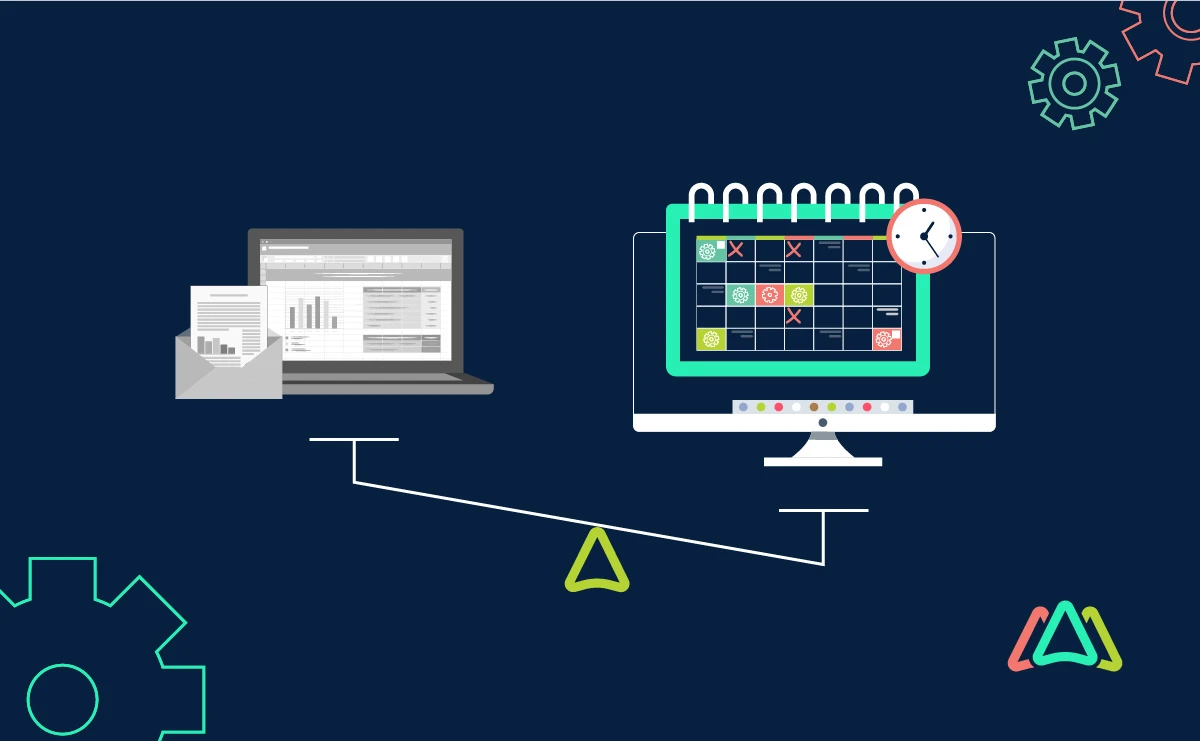
Preventative Maintenance Software Benefits Trump Manual Methods
Times have changed! With fluctuating markets, economic stressors, and other uncertainties, staying on top of the economic curve challenges today’s businesses. For this reason, and the current fast-paced business environment, ensuring effective management of facilities and equipment maintenance is no longer an option for business operations.
Businesses increasingly use Preventive Maintenance Software to manage and optimize maintenance processes. While some organizations still rely on manual methods, there are demonstrated advantages to adopting preventive maintenance software over traditional approaches. In this article, we'll explore five ways preventive maintenance software trumps manual methods, providing concrete reasons why organizations should consider investing in a CMMS.
1. Efficiency and Time Savings
One of the most significant advantages of preventive software maintenance is its ability to streamline and automate maintenance tasks, resulting in improved efficiency, reliability, and time savings. With manual methods, technicians spend valuable time sifting through paperwork, manually scheduling tasks, and logging and tracking maintenance activities on cumbersome spreadsheets. In contrast, preventive software maintenance centralizes all maintenance-related data in one digital platform, allowing instant access to work orders, equipment records, and maintenance schedules. With this approach, maintenance managers and their teams can access information in real-time, anywhere, anytime, and from any device (PC, Mac, smartphone, tablet, etc.). This centralized system eliminates manual record-keeping, time lags, and errors caused by unnecessary data entry, enabling maintenance managers and technicians to focus their time and energy on actual maintenance activities rather than time-consuming administrative tasks.
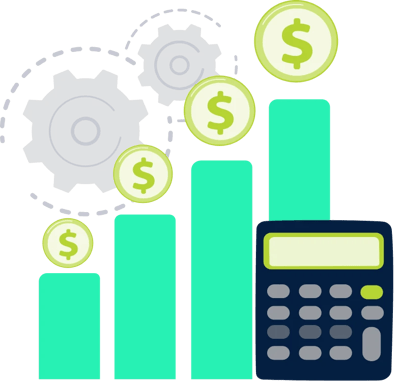
A study by the Aberdeen Group found that companies using CMMS software experienced a 28% reduction in maintenance costs and a 30% increase in maintenance productivity compared to those relying on manual methods (Aberdeen Group, 2019). These findings underscore the significant efficiency gains achieved by adopting CMMS software for preventive maintenance.
A deeper look into the study’s implications shows that CMMS’s cost-saving impacts are best seen through proactive preventive maintenance scheduling, which helps identify and address issues before they escalate, minimizing downtime and reducing maintenance expenses. Improved productivity resulting from using a CMMS is attributed to features such as automated work order generation, real-time asset tracking, and centralized data management. Considered together, these features facilitate quicker decision-making, more efficient maintenance planning, and shorter time to complete work orders.
2. Improved Asset Management
Effective asset management is key for maximizing the lifespan and performance of equipment. The CMMS preventive maintenance features facilitate better asset management by providing comprehensive insights into equipment health, maintenance history, and performance metrics. With CMMS software, organizations can easily track asset life cycles, identify maintenance trends, and schedule proactive maintenance tasks to prevent costly breakdowns.
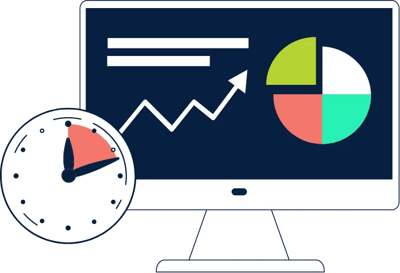
Moreover, preventive maintenance software often comes equipped with asset tracking and inventory management features, allowing companies to keep track of spare parts and consumables more efficiently. By maintaining accurate inventory records and automating reordering processes, businesses can reduce the risk of stockouts and minimize downtime due to unavailable parts.

Depending on the size and complexity of the maintenance operation, implementing a CMMS can require a sizable investment in time, energy, and funds. Maintenance leaders should consider the immediate, short, and long-term gains concerning managing assets. CMMS software can immediately enhance asset management in the short term by providing a centralized platform for organizing critical asset information. This includes maintenance history, asset location, warranty information, and upcoming maintenance schedules. By consolidating this data into a single system, CMMS software allows for easier access to information, facilitating quicker decision-making and more efficient resource allocation. This improved visibility into assets helps reduce downtime, increase equipment reliability, enhance operational efficiency, and lower costs.
In the long term, CMMS software contributes to continuous improvement in asset management through its preventive maintenance capabilities. By implementing preventive maintenance schedules within CMMS, organizations can proactively address potential issues before they lead to costly breakdowns or failures. Over time, this proactive approach helps to extend the lifespan of assets, minimize unexpected downtime, and reduce overall maintenance costs. Additionally, CMMS enables organizations to track Maintenance KPIs. By analyzing this data over time, organizations can identify trends, optimize maintenance strategies, and make informed decisions regarding asset lifecycle management, such as whether to repair, replace, or upgrade assets.
Overall, CMMS software provides a foundation for continuous improvement in asset management, resulting in long-term efficiency, reliability, and cost savings. Whether short-term or long-term gains are being considered, a CMMS offers company owners an avenue to reclaim their investment and much more as time goes on.
3. Enhanced Compliance and Reporting
Regulatory compliance is commonplace in industries like manufacturing, healthcare, and utilities. This means businesses operating within these sectors must adhere to laws, standards, and regulations to ensure workplace safety, quality, and environmental responsibility. Compliance involves careful record-keeping, maintaining maintenance schedules, and documenting inspections, audits, and corrective actions.
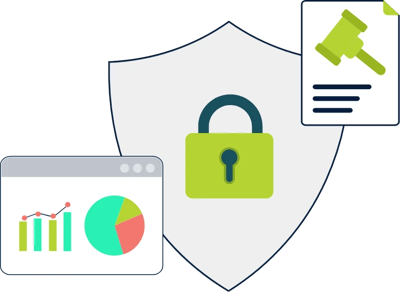
Failure to comply has heavy consequences, such as legal penalties, fines, sanctions, loss of licenses or permits, damage to reputation, increased liability risks, and potential harm to employees, customers, and the environment. Given what’s at stake, every effort must be made to meet all regulatory requirements. The time-consuming nature of manually meeting these requirements makes CMMS’s automated record-keeping capabilities a much better alternative. The system does this by providing a robust framework for managing these requirements efficiently in two important ways:
Standardized Maintenance Procedures
CMMS helps organizations establish and enforce standardized maintenance procedures in line with regulatory requirements. It enables the creation of predefined maintenance tasks and schedules tailored to specific regulatory standards, ensuring that critical maintenance activities are conducted on time and according to established protocols. CMMS software also systematically documents all maintenance activities, including work orders, inspections, and maintenance histories, providing a comprehensive and easy-to-access audit trail demonstrating compliance during regulatory audits.
Asset Tracking Capabilities
A CMMS enables asset tracking and management, which is crucial for regulatory compliance. With a CMMS, organizations can maintain accurate equipment, facilities, and infrastructure records, including their locations, specifications, and maintenance histories. This level of asset visibility ensures that organizations can quickly identify assets subject to regulatory requirements, pull safety inspections and calibration checks, and address compliance obligations. Furthermore, the CMMS’s real-time reporting capabilities enable maintenance professionals to monitor asset condition and performance, making it possible to detect and promptly address compliance issues.
Finally, CMMS software’s robust reporting capabilities enable companies to generate detailed maintenance logs, inspection records, and compliance reports at the touch of a button. These reports help companies meet regulatory requirements and serve as a valuable resource for audits and inspections. In many CMMS platforms, reports can be scheduled to be auto-generated in line with deadlines and shared with stakeholders.
4. Data-Driven Decision-Making
In today's data-driven business landscape, access to real-time insights is essential for making informed decisions. A CMMS and its preventive maintenance management features empower maintenance professionals with actionable data and analytics to optimize maintenance strategies and resource allocation.
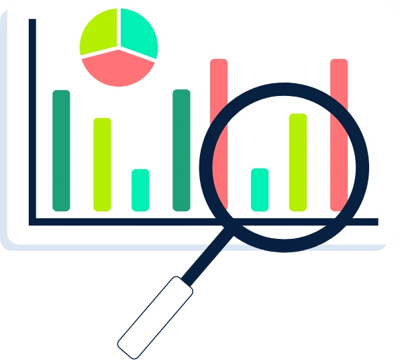
By leveraging historical maintenance data and performance metrics, CMMS software enables predictive maintenance, allowing companies to anticipate equipment failures and proactively address maintenance issues before they escalate. Additionally, advanced analytics capabilities within CMMS software enable companies to identify trends, track key performance indicators (KPIs), and continuously improve maintenance processes over time. Most CMMSs can easily generate KPIs like MTTR, MTBF, Total Downtime, Avg. Maintenance Cost and Failure Rate are very time-consuming when using spreadsheets and next to impossible for businesses using paper and pen for maintenance tracking.
Let’s explore how a CMMS can inform maintenance managers’ decision-making. The main benefit for maintenance managers is having access to real-time insights and comprehensive analytics regarding equipment performance, maintenance activities, and resource allocation. For instance, maintenance managers can utilize CMMS-generated reports to identify trends in equipment failures or breakdowns. This helps them to prioritize maintenance tasks effectively and allocate resources where needed. Additionally, CMMS data allows for analyzing maintenance costs over time, facilitating budget planning and optimization. For example, by examining historical maintenance records within the CMMS, managers can identify opportunities to reduce costs by implementing preventive maintenance strategies or optimizing spare parts inventory levels.
Another powerful way CMMS facilitates informed decision-making is by providing predictive analytics on an organization’s operations. By leveraging predictive maintenance algorithms and machine learning models integrated into the CMMS, maintenance managers can forecast equipment failures before they occur based on factors such as asset conditions, usage patterns, and historical performance data. This enables managers to plan maintenance activities when they’re actually needed, minimizing downtime and preventing costly unplanned breakdowns. CMMS software empowers maintenance managers to make data-driven decisions by providing them with actionable insights, predictive capabilities, and analytical tools to optimize maintenance operations, reduce costs, and maximize equipment reliability and uptime.
5. Scalability and Flexibility
As businesses grow and evolve, their maintenance needs change. Preventive maintenance software offers scalability and flexibility to adapt to evolving requirements and organizational growth. Unlike manual methods, which become increasingly cumbersome and inefficient as operations expand, CMMS software can easily accommodate increased workloads, additional assets, and new maintenance workflows.
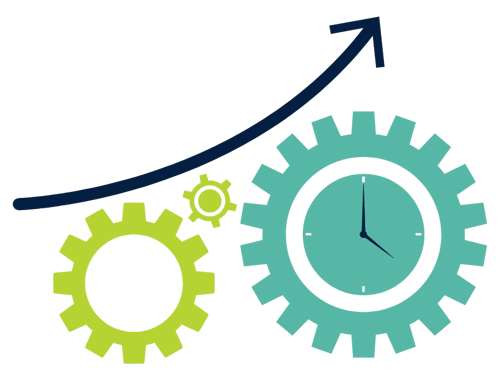
The scalability and flexibility of a CMMS provide significant benefits to organizations over time by accommodating growth, evolving needs, and technological advancements. For instance, as an organization expands or acquires new facilities, a CMMS can seamlessly adapt to accommodate the increased volume of assets, maintenance tasks, users, and additional locations. This scalability ensures that the CMMS remains effective and efficient in managing all maintenance operations, regardless of the organization's size or complexity. Additionally, as maintenance requirements evolve or regulatory standards change, a flexible CMMS allows organizations to customize workflows, templates, SOPs, and reports to align with new processes or compliance mandates. This adaptability enables organizations to maintain compliance, optimize maintenance practices, and meet evolving business objectives without costly system replacements or overhauls.
The integration capabilities of CMMS software continue to evolve and extend many business applications and IoT (Internet of Things) devices, enabling organizations to leverage emerging technologies and unlock new opportunities for efficiency and innovation. CMMS software has done well to evolve its integration capabilities as new technologies emerge. The same cannot be said for manual maintenance tracking methods like spreadsheets.
For example, a flexible CMMS can integrate with IoT sensors, enterprise resource planning (ERP) systems, or asset management software, allowing organizations to gather real-time data, automate maintenance workflows, and improve processes. By embracing technological advancements and integrating with complementary solutions, organizations enhance the functionality and value of their CMMS.
Finally, many modern CMMS solutions are cloud-based, offering the flexibility of remote access and mobile functionality. This allows technicians to manage work orders, access maintenance data, and perform inspections from anywhere, enhancing productivity and responsiveness.
Preventive maintenance software offers numerous advantages over manual methods, including increased efficiency, improved asset management, enhanced compliance, data-driven decision-making, and scalability. By investing in a CMMS solution, company owners can streamline maintenance processes, reduce downtime, and improve their facilities and equipment's overall reliability and performance.
Before Investing in Preventative Maintenance Software
Whether you decide to invest in free preventive maintenance software or a commercial version, similar benefits are expected to accrue. Here is a rough process you could follow to approach your decision.
1. Assess Your Maintenance Needs
Evaluate your current maintenance practices, identify pain points, and determine the specific features and functionalities the business requires in a CMMS solution. Collaborate with all stakeholders, including departments beyond maintenance and facilities management, to establish success criteria. Success criteria should include functionality that addresses current business needs and long-term requirements that accommodate planned growth. Success criteria should also encompass security, training and support, ease of use, cost, integration capabilities, and vendor reputation.
2. Research CMMS Providers
Explore different CMMS software vendors, comparing features, pricing, customer reviews, and support options to find the best solution for your requirements and budget. Taking your time, asking questions, and requesting a demonstration are essential steps to consider before deciding on a CMMS provider.
3. Plan for Implementation
Develop a clear implementation plan, including data migration, training schedules, and change management strategies to ensure a smooth transition to the new CMMS software. Work directly with the CMMS provider to establish implementation milestones, timelines, and project management subject matter experts.
4. Engage Stakeholders
Involve key stakeholders, including maintenance technicians, facility managers, and IT personnel, in the decision-making process to gain buy-in and support for the new CMMS initiative.
5. Measure Success
Establish Key Performance Indicators (KPIs) to track the success of your CMMS implementation, such as maintenance costs, equipment uptime, MTTR, MTBF, preventive maintenance compliance, and workforce productivity. Regularly monitor progress toward achieving maintenance goals and compare performance over time.

Boosting Sustainability through Proactive Preventative Maintenance
In today’s environmentally conscious business landscape, sustainability has become a key priority for organizations across industries. Preventive maintenance software helps companies align their maintenance strategies with their sustainability goals by minimizing resource waste, reducing energy consumption, and optimizing equipment efficiency. By identifying and addressing maintenance issues before they escalate, businesses can prevent excessive wear and tear on machinery, reducing the need for frequent replacements and prolonging asset life. This proactive approach helps reduce the environmental impact of operations while also cutting down on equipment disposal and procurement costs.
Many CMMS platforms now include features that track and monitor energy usage and emissions data. This allows organizations to identify energy inefficiencies and adjust to optimize energy consumption. By combining preventive maintenance with a focus on sustainability, businesses can enhance their equipment's reliability and performance and demonstrate a commitment to environmental responsibility - an increasingly important factor for customers, investors, and regulatory bodies alike.
TABLE OF CONTENTS
Keep Reading
Every maintenance professional faces it sooner or later — that critical time when an aging ...
18 Nov 2025
The term 'best' is often used loosely, without a clear understanding of its context or ...
14 Nov 2025
In the not too distant past, maintenance strategies have been defined by reaction—fixing ...
13 Nov 2025
Tax season is the time of year that often sends a ripple of anxiety through many of us. The ...
11 Nov 2025
Selecting a Computerized Maintenance Management System (CMMS) can, at first glance, be an ...
4 Nov 2025
In healthcare facilities, equipment uptime involves more than achieving operational ...
31 Oct 2025
Companies are subject to economic ups and downs, also known as economic volatility. Today, ...
30 Oct 2025
Maintenance challenges are a constant struggle, with unplanned downtime costing manufacturers ...
27 Oct 2025
Last winter, a maintenance technician at a U.S. paper mill ignored a predictive alert that ...
10 Oct 2025
Many organizations proudly say they “have a CMMS,” but ownership alone doesn’t equal ...
9 Oct 2025
Every maintenance team is under pressure to do more with less. Unplanned downtime is often ...
7 Oct 2025
The implementation of simple, yet powerfully effective, checklists has repeatedly ...
3 Oct 2025
In manufacturing, every second counts. When production stops, whether due to scheduled ...
2 Oct 2025
The increasing cost of maintenance, lack of accountability, and siloed systems leave many ...
30 Sep 2025
Preventive maintenance is one of those things maintenance teams know they need to do, but it ...
26 Sep 2025
Public services are essential to daily life. The provision of safe roads, functional transit, ...
25 Sep 2025
For most manufacturing facilities, a major focus of their maintenance teams revolves around ...
24 Sep 2025
Have you ever tried explaining to the CEO why the production line has been down for hours ...
18 Sep 2025
Over the past few decades, the hotel industry has undergone a dramatic transformation. ...
16 Sep 2025
Profitability is at the top of the list for manufacturing organizations when conversations ...
12 Sep 2025







